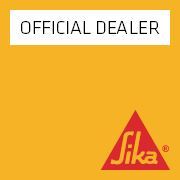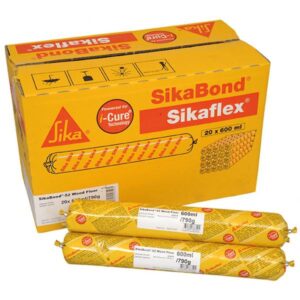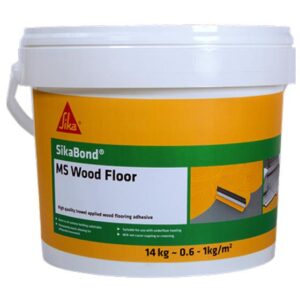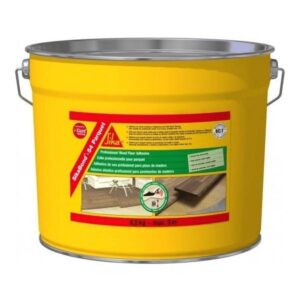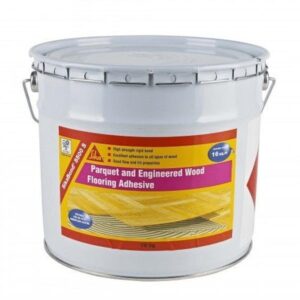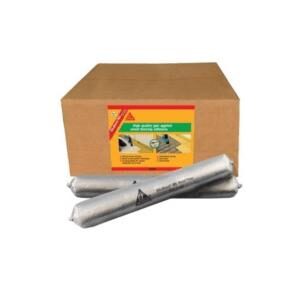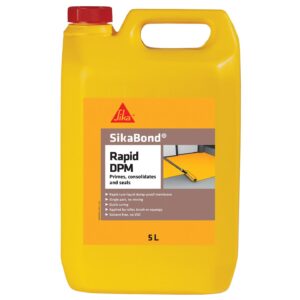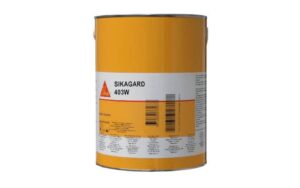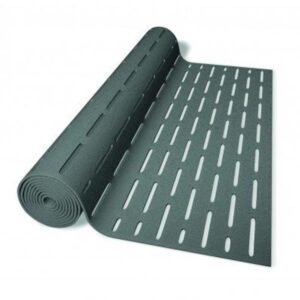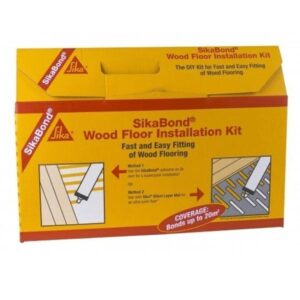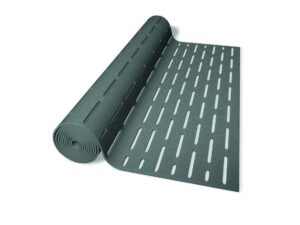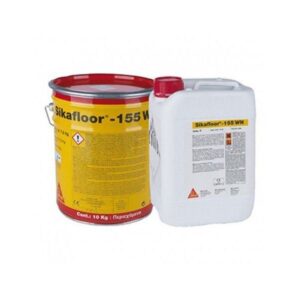What is a wood floor adhesive?
A wood floor adhesive bonds a real wood floor to a subfloor and is effective on concrete, chipboard and ply. Its application improves the speed and quality of hardwood flooring installation, making it smarter and more hassle-free than other installation methods like floating, nailing down and sticky membrane.
Compared to its alternatives, wood floor adhesives have more a solid feel and are more secure and resistant to wear and tear, improving the floor installation’s comfort and acoustic properties. The application of wood floor adhesive is similar to applying a tile adhesive, so ensure that you apply the adhesive evenly and correctly to ensure a firm finish to your wooden floor.
We stock the full range of highly recommended Sika wood adhesives, such as the popular SikaBond-54 Wood Floor, so you can be assured that we have the right tool regardless of whether you’re working with engineered, semi-solid or solid wood.
What are the types of wood floor adhesives?
Depending on the end goal and the type of floor installation, there are different wood floor adhesives you can choose from. Polyurethane-based wood floor adhesive, for example, is great for improving sound dampening and moisture protection.
On the other hand, if you are looking to install hardwood flooring on top of heated subfloors, a water-based wood floor adhesive is the right choice for you. Powder adhesives are very similar in functionality to water adhesives, with the added functionality of wood swelling reduction. Solvent-based wood floor adhesive, on the other hand, is widely recommended if you are working with hardwood flooring – try the SikaBond® 5500 S for bonding wood block parquet.
If you are working with elastic construction joints, however, you should opt for highly flexible one-component systems such as SMP-based wood adhesives. SikaBond-52 Wood Floor, for example, is a great fast curing elastic wood flooring adhesive for professional use. Additionally, always keep an eye out for adhesives which are low or free from emissions and volatile organic compounds (VOC) whilst still maintaining a strong bonding power to most sub floor types..
What is the best wood floor adhesive for your budget?
Always do your research before deciding which wood floor adhesive to use for your building project. Simply opting for the cheapest option to save money could do more harm than good to your floor installation in the long run.
There are two main types of wood floor adhesives to choose from: urethane adhesive and water-based adhesive. Urethane adhesive is perhaps the most popular wood floor adhesive. While this adhesive has a higher price tag, it’s very eco-friendly and can be used on solid wooden floors – but don’t forget to do a proper clean-up following installation!
Water-based wood floor adhesives, on the other hand, are favoured because they are easier to apply and more adaptable. Besides, with water based adhesives you have more room for correction when it comes to securing engineered hardwoods to the subfloor.
For bonding wooden floors to all common substrates, use a high quality, trowel applied MS adhesive like SikaBond MS Wood Floor – completely water and solvent free, it will alleviate the likelihood of wooden boards cupping or crowning.
What are the benefits of using Sika wood floor adhesive?
There are many benefits of using a wood floor adhesive for your flooring projects, most of which are directly related to reducing the risk to the material and improving its overall performance. For one thing, the mechanical features of wood floor adhesives are engineered to create strong bonds between any size of wood, including very wide planks. This will give a solid feeling to the floor, reducing excessive movement and the chance of squeaky floorboards down the line.
What’s more, our wood floor adhesive systems are capable of forming bonds which are both tough and flexible, with a range of different materials such as cement, ceramic and glass. And since wood adhesives are elastomeric, they will adjust to the contractions and expansion of the wood over the lifespan of the floor.
Wood floor adhesives are also anti-microbial and moisture resistant, meaning they can protect wooden flooring from both moisture, which could cause deformation to hardwood planks, and the accumulation of bacteria, mould and mildew in the spaces between the floor and subfloor.
Last, but not least, when compared to using specialist UFH underlays and tongue and groove adhesive, opting for a wood floor adhesive is a significantly more cost-effective solution. Moreover, if a wooden floor is fully bonded, it can be included as part of the structure of the building for insurance purposes.
Should you use glue or wood floor adhesive products for your hardwood floor?
Choosing the wrong type of wood floor adhesive or glue can do quite a bit of damage to the integrity of your hardwood floors, which is why it’s essential to understand the difference and know which the right choice for your project is.
While essentially performing the same function of bonding surfaces together, wood floor adhesives and glue have very different formulas; adhesives are made from synthetic products and glue contains animal and plant components.
The best application for wood glue is to bond two wooden surfaces together – a good choice for hidden joints and wood cabinets. Wood adhesives, on the other hand, can bond almost any two materials together and are very efficient on slick surfaces. This makes them the best choice for hardwood floors and areas where moisture is present.
Wood floor adhesives are also more pliable than glue, which means they would better adapt to hardwood’s tendency for flexing, expanding and contracting, creating the feeling of a traditional solid wooden floor.
Therefore, when it comes to hardwood flooring installations, wood floor adhesives such as SikaBond-54 Wood Floor are better choice for the long haul, provided you use them correctly and follow the instructions.

